Gilles de Rais, the monster of Brittany
Gilles de Montmorency-Laval, known to history as Gilles de Rais, was born in 1405 into one of the wealthiest families in France. At his birth the Hundred Years War had been raging between England and France for 68 years, and it would rage for 48 more. [1] The marriage between his father Guy de Rais and mother Marie de Craon had been arranged by his maternal grandfather, Jean de Craon. Jean was actually the same age as Guy, and the two were distantly related. Jean had just arranged for an inheritance (which Guy had thought was his) to come under Jean’s control instead, and the marriage was a peace offering meant to avert a vendetta. The pair had two children, Gilles and his younger brother Rene, who were raised in the traditional fashion of the French aristocracy, which is to say by servants rather than by their parents, and with efficiency rather than affection. Gilles excelled in both studious and martial pursuits, but showed little aptitude for the guile that was necessary to political life, and it was these qualities that would shape his adult life. In 1415, three tragedies befell the de Craon family. The first came on the field of battle at Agincourt, where the outnumbered English defeated the French in a famous battle. More famous in France is the English conduct after the battle, when they solved the problem of having more French prisoners than they could handle by simply slaughtering them all. One of those thus killed was Amaury de Craon, only son of Jean de Craon. The same year, both of Gilles’ parents died – Marie of unrecorded causes, and Guy, later in the year, in a boar hunting accident. Guy had left specific instructions in his will as to how his sons would be raised, wishing his old enemy Jean to have no part in their upbringing, but these were easily brushed aside by Jean after his death. As the second richest man in France, he was used to getting what he wanted, and he was not afraid to break some rules to do it. So the young Gilles learned that the law meant nothing if you had the nobility and the wealth to flout it.
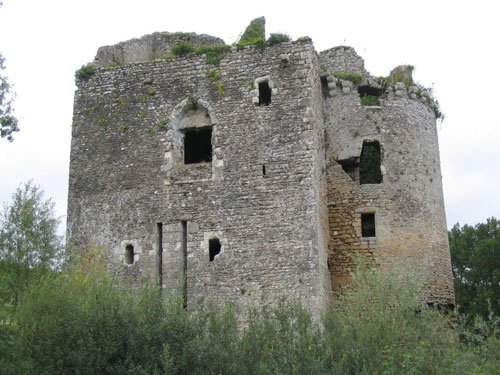
At the age of 14 Gilles was sent out to be a squire, serving those fighting in the still ongoing war with England. This was relatively normal for noble boys his age, as was the fact that his grandfather was attempting to use him as a token in marriage to further enrich the de Craon family. The first marriage he arranged was to Jeanne Paynel, a wealthy young orphan. The union would have made de Craon one of the richest and most powerful men in Europe, and so the Parliament in Paris forbade it being enacted until Jeanne came of age – which would be a fair while off, as she was only four years old at the time. Jean de Craon had no wish to wait that long, and so he ordered Gilles to kidnap his cousin, Catherine de Thouars, who was heir to a large amount of land next to the de Rais land. Although several of her kinsmen tried to rescue her, she was compelled to marry Gilles, making him even more wealthy (as her father had died while she was imprisoned). They would have one child, a daughter, nine years later. His marriage settled, Gilles left de Rais and headed to the court of the Dauphin.
France’s situation at the time will be familiar to any who have studied Regency England. The King (in this case Charles VI) was mad, and his son, also named Charles, was the one who truly ruled the kingdom. As the heir to the throne he bore the title of Dauphin. His rival claimant to the throne of France was Henry V, king of England, and it was this English claim that was one of the main causes of the ongoing wars. [2] In these wars Gilles fought for the Dauphin (who became king in 1422), distinguishing himself as being brave to the point of recklessness, but skilled enough to turn that bravery into victory. In 1429, when Gilles was 25, a young girl named Joan walked into the court in Chinon, and told the King that she had been sent to him by God. If he gave her an army then she would lead it to Orleans, which was then under siege by the English, liberate the city, and deliver him the crown. Charles VII had nothing to lose. If Orleans fell, he was finished. His army was demoralized, and needed something to believe in. So he sent Joan out with an army of 10,000 men and a military advisor to stand by her side. That advisor was Gilles de Rais.
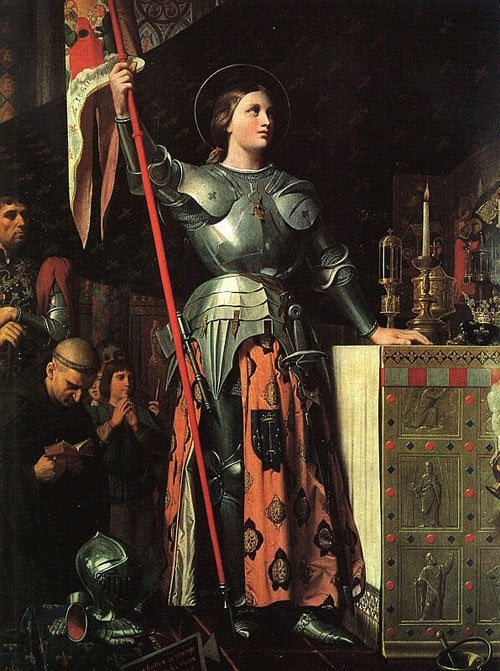
Together, they drove the English from the city and delivered it to Charles. Joan then persuaded Charles to send an army out towards Rheims, the traditional coronation site of the French monarchs, deep in Burgundian territory. Again they were victorious, and Charles was finally able to be crowned King. In recognition of his contributions at Orleans, Gilles de Rais was one of the lords who carried the sacred oils to anoint the king, and he was also named Marshall of France – the pre-eminent soldier in Charles’ armies. Gilles was at the peak of his success, but sadly the only way to go was down. War was his craft, and politically he was easily overmatched in the court. Thus he never wielded the power that his marshal’s title could have granted him. The cut-throat politics of the court were not for him, and in 1431 when those machinations saw Joan refused a ransom from English hands (thus leaving her to be burned at the stake as a heretic), Gilles was powerless to save her. His stature was struck another serious blow in 1432 when Jean de Craon died, and in a calculated snub left his sword and breastplate to Gilles’ younger brother Rene, signally who he considered the true heir to his legacy. It was around this time that Gilles began to murder children.
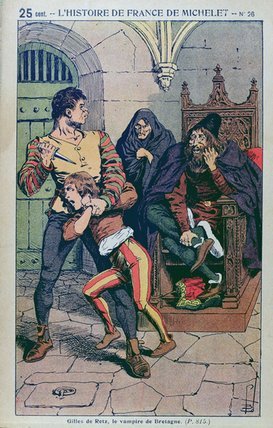
Historical psychology is always a risky game, with no ability to check your theories, so in this case rather than (as some have done) try to explain Gilles’ actions, I shall simply state them. In 1432, Gilles de Silles, a cousin of Gilles de Rais, hired a young apprentice boy to deliver a message. When the boy failed to arrive, de Silles claimed that he must have fallen victim to bandits on the road. In truth, according to later confessions, de Silles delivered the boy to Gilles, who made him his first victim. The boy was sexually abused, murdered, and cremated in the cellar of Machecoul Castle. Many more murders followed, and people began to take notice. The peasants later admitted that they all suspected de Rais, but they knew that their word would not count against that of a noble. Instead they kept their children close, if they were able, and spoke in dark mutters of evil things stalking the night. Gilles was supplied with victims by his cousins, his servants, and an old woman named Perrine Martin, who featured heavily in those tales. It is estimated that Gilles killed between 80 and 200 children, male and female, from the ages of 6 to 18, between 1432 and 1440. Just as the peasants knew where to lay the blame, so too was it known to several nobles. Rene, Gilles’ brother, almost certainly knew. And when Rene was coming to occupy Machecoul and prevent Gilles from selling off any more family property, the captain of his guard observed Gilles’ servants carrying bodies from a cellar, but made no comment. They were only the bodies of peasants, after all.
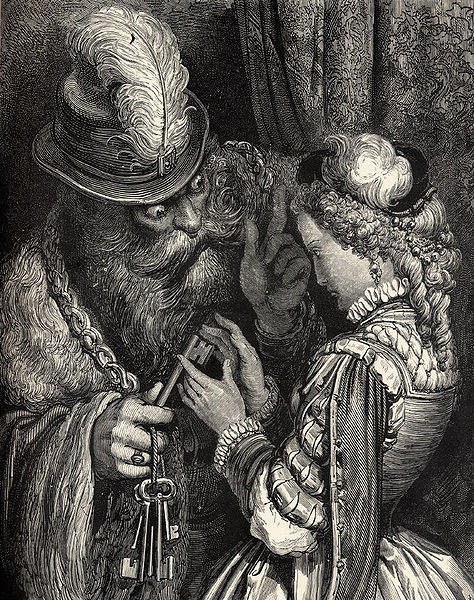
More concerning to the nobles was Gilles’ spendthrift manner and obsession with the occult. He became obsessed with a mystery play about the siege of Orleans, and financed several incredibly expensive productions of it. He also hired several alchemists and magicians to summon demons for him, the most famous of which was an Italian man named Prelati. In 1439, in Gilles castle at Tiffauges (where he, and the murders, had moved several years previously), they set out to summon the devil. Prelati, who was adept at conning Gilles’, had him convinced that he was summoning more and more powerful demons, and Gilles was prepared to give the devil anything (save his life or soul) in exchange for the restoration of his fortune. Because Gilles was, if not broke, at the least not as rich as he used to be. His brother had managed to have a royal edict passed forbidding him from selling off any of his lands or castles, and his constant excesses had burned up most of his liquid capital. It was this lack of funds that was to prove his undoing.
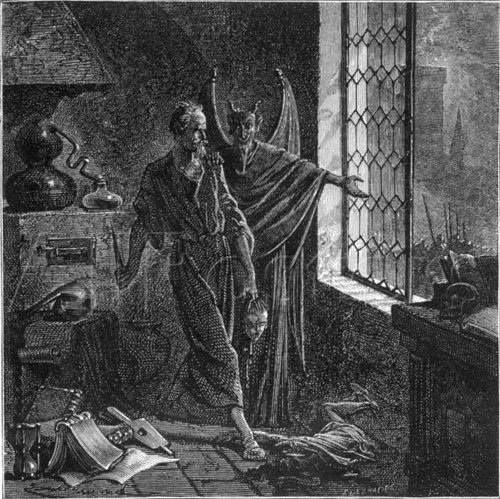
In 1440, Gilles kidnapped a priest from the church at St. Etienne de Mermorte. The priest was the brother of the treasurer of Brittany, and Gilles hoped to compel him to forgive the debts that were owed him. However Gilles had made a critical error. Despite everything he was still a Marshal of France, and Charles VII still remembered the service he had done him. This had helped to keep him safe from the secular authorities. But now he had made an enemy of the church, and the bishop of Nantes, Jean de Malestroit, was charged with investigating him. He soon uncovered both the murders and the demonology, and when he made his findings public Gilles was arrested. The original charge was simply for the kidnapping of the priest, which witnesses could testify to, but the first witnesses the judge called were the parents of the lost children of Machecoul. Finally given a chance to speak about the horrors they had been forced to bottle up inside, their testimony was devastating. Gilles was indicted on charges of 33 murders, sodomy [3] and heresy, in addition to the original charge of despoiling the sanctity of a church. Gilles refused to enter a plea or recognise the authority of the church, and so the bishop of Nantes formally excommunicated him. This cowed him, and two days later he tearfully entered a guilty plea, at which point he was readmitted to the church. He admitted all the charges save for that of demon-summoning. [4] However given the number of other prisoners (such as Prelati) who had admitted to participating in the demon summoning the judge had him sent away to be tortured, after which he confessed everything. Gilles was sentenced to be burned as a heretic, though in recognition of his guilty plea and contrite demeanour he would be killed by hanging before being burnt. The bishop of Nantes however had his body removed from the fire and given a Christian burial.

So died Gilles de Rais, a one-time hero now become one of France’s most notorious villains. In truth, given the tolerance for nobles abusing peasants, it is hard to say how unique Gilles was beyond his being caught. And of course, there are those who claim that the charges against him were all the fabrications of a powerful church intent on punishing one who had challenged its authority (though the evidence would make this unlikely). In the end, Gilles the man became Gilles the symbol. The symbology of the monster by the side of a saint became a key part of Joan of Arc’s mythos. Notorious tosspot Aleister Crowley (in his highly inaccurate “Banned Lecture” on de Rais,) described de Rais as a male equivalent of Joan, martyred by the Catholic Church for his occult beliefs. [5] Four hundred years later, the actions of Jack the Ripper would bring serial killers into the public consciousness, and finally we would have a label to hang on Gilles. Not that this would help us understand his acts, but in the end some things are perhaps better left unknown.
[1] Yes, I know that’s 116 years. It was a stupid war on multiple levels.
[2] The other was the ongoing battles between the two powerful French noble factions, the Burgundians (led by the Duke of Burgundy) and the Armagnacs (led by the Duke of Orleans and the Count of Armagnac). The Armagnacs had killed the Duke of Burgundy when he had been under the king’s protection, and so the Burgundians had swung their support behind the English. It was the weakening effect of this factionalism on the nation that had allowed the English invasion to take place at all.
[3] In the eyes of the people of the time, the fact that some of the victims of Gilles’ abuse were male was considered almost a greater offence than the fact that he had murdered them.
[4] There was a logic to this. The murder of a few peasants was a civil crime, and could still be forgiven by royal pardon. The practice of demon-summoning, however, could not.
[5] The one good point Crowley does make is that the 15th and 16th century English histories painted Joan as a harlot who consorted with demons. Where he goes with that point is another matter.
